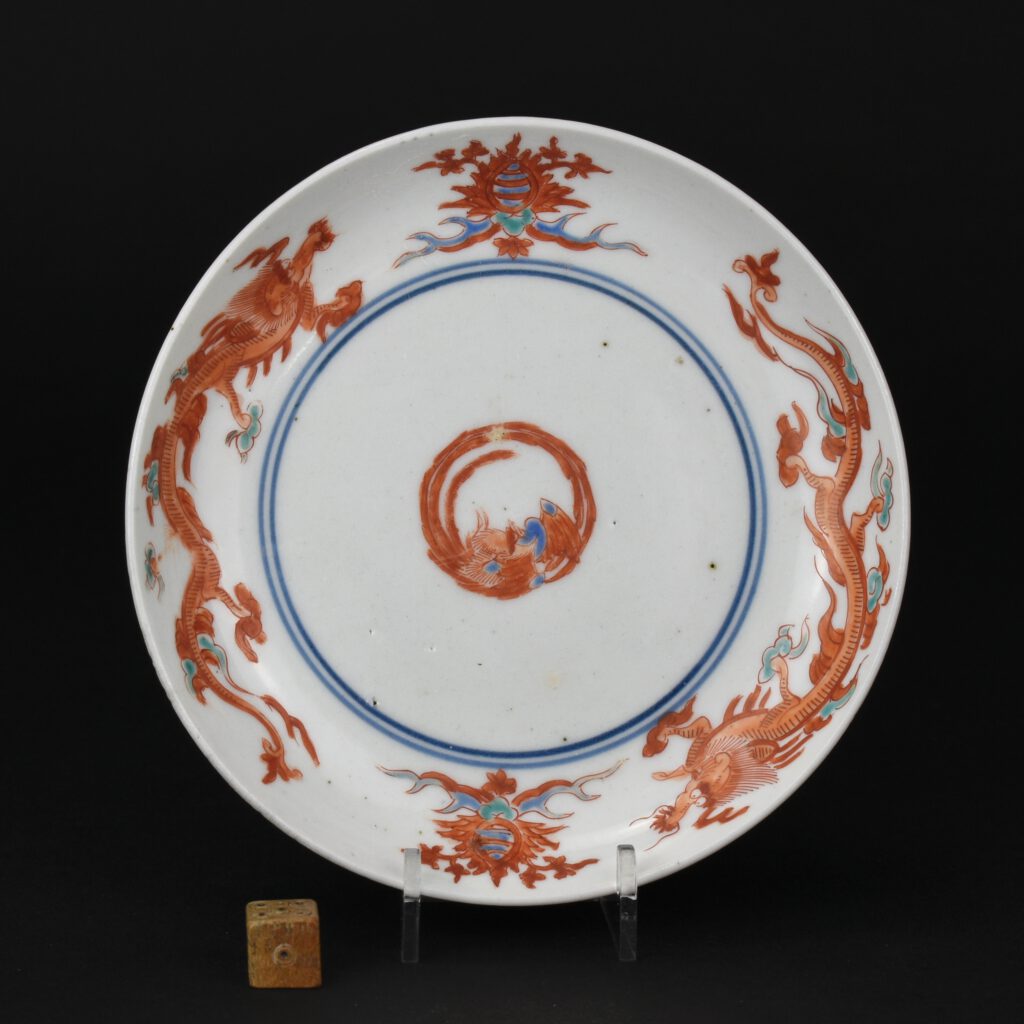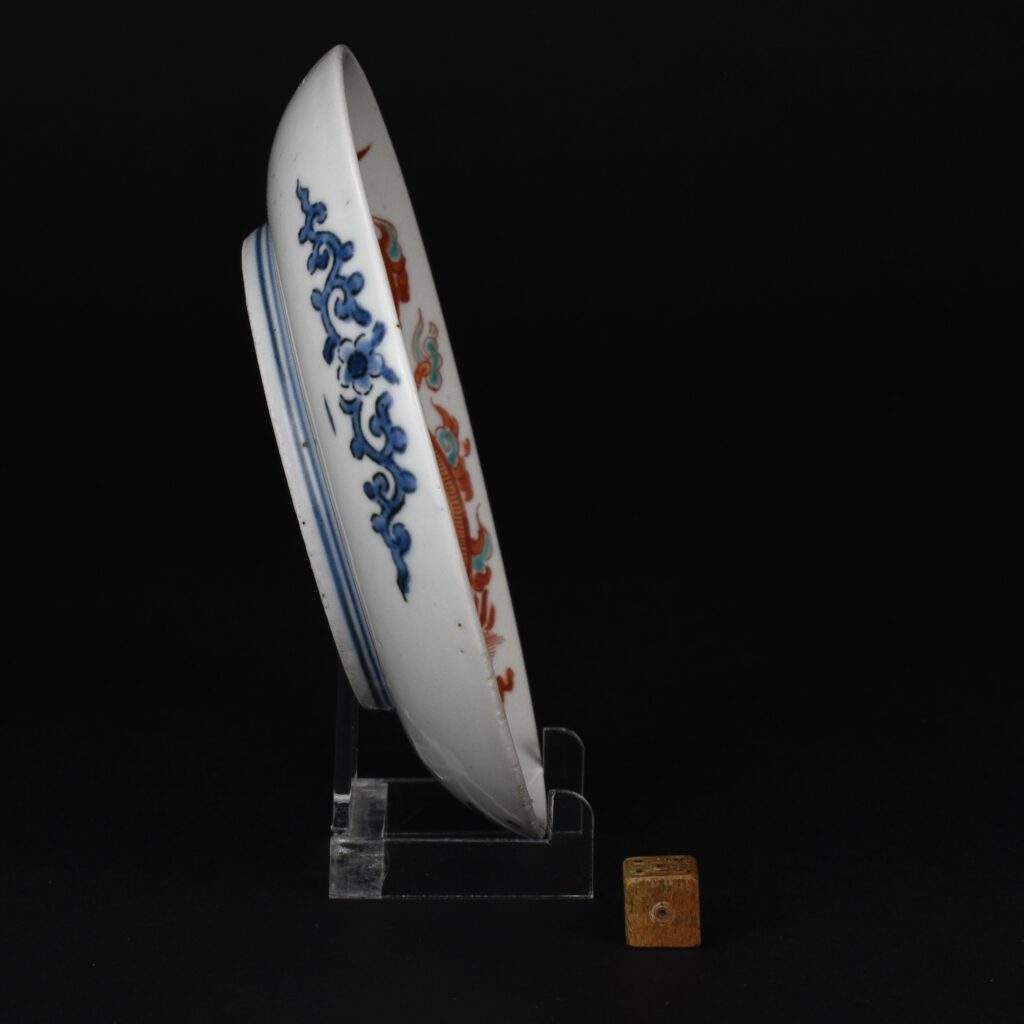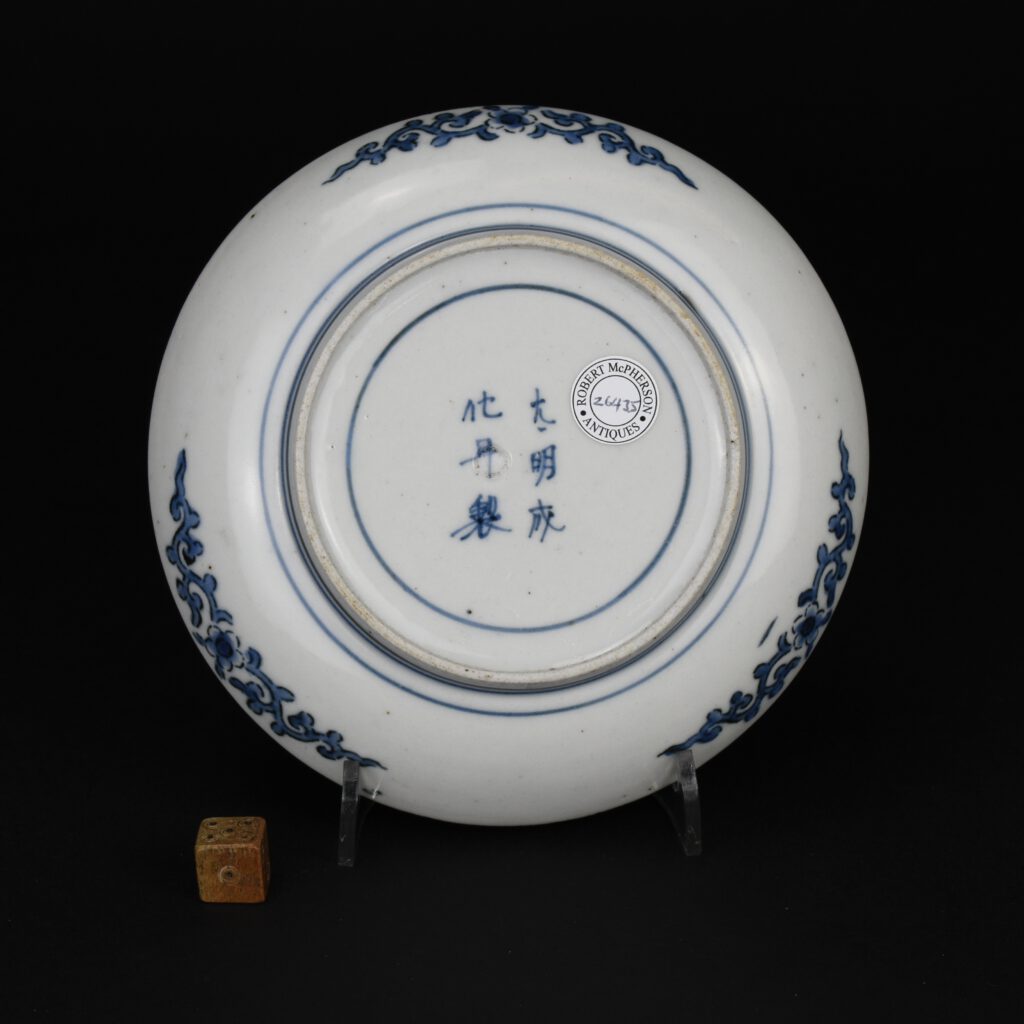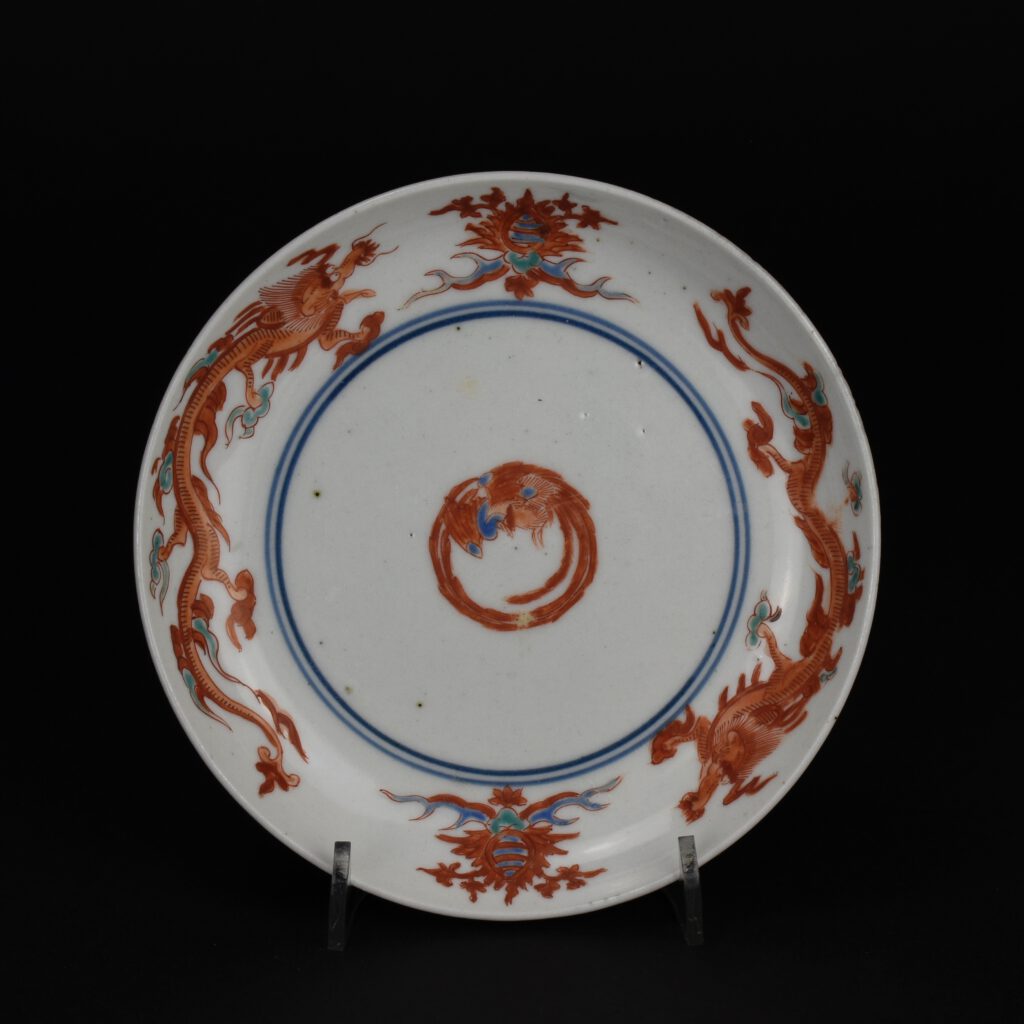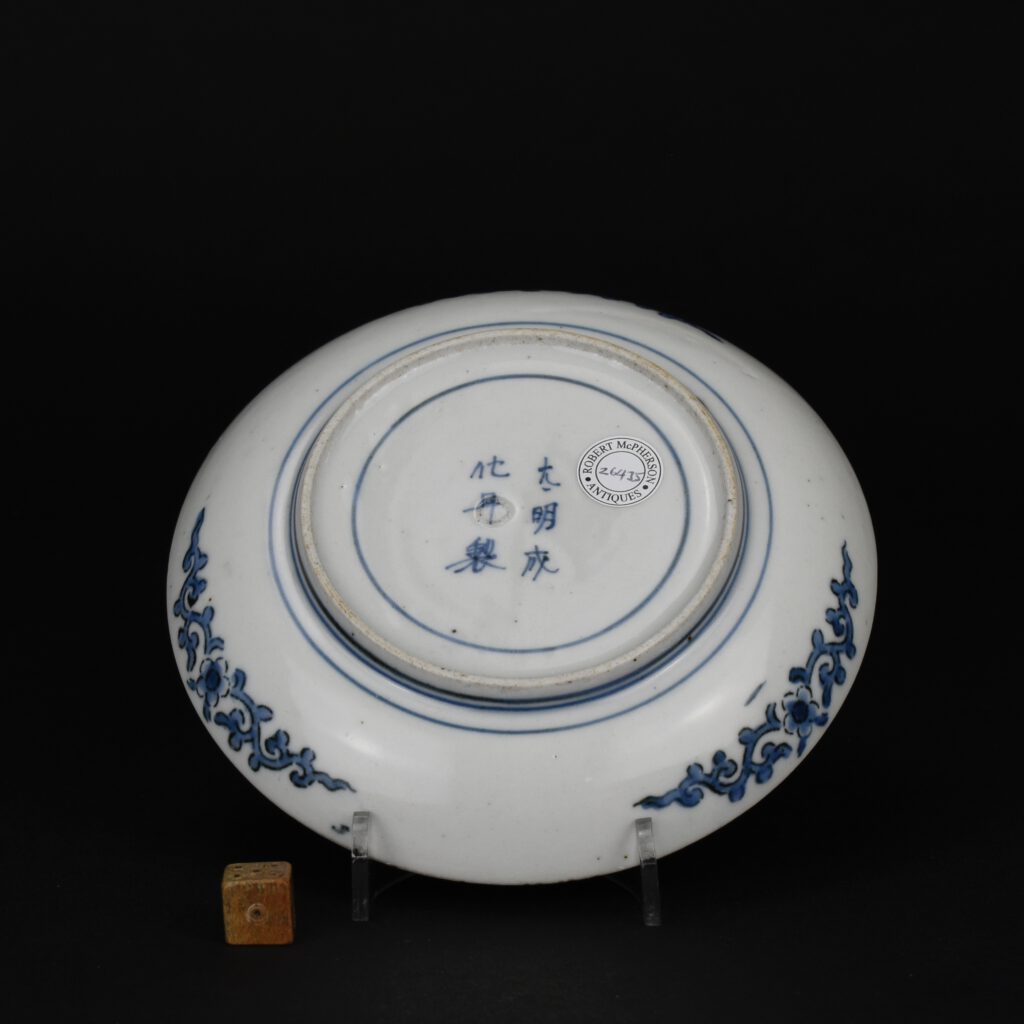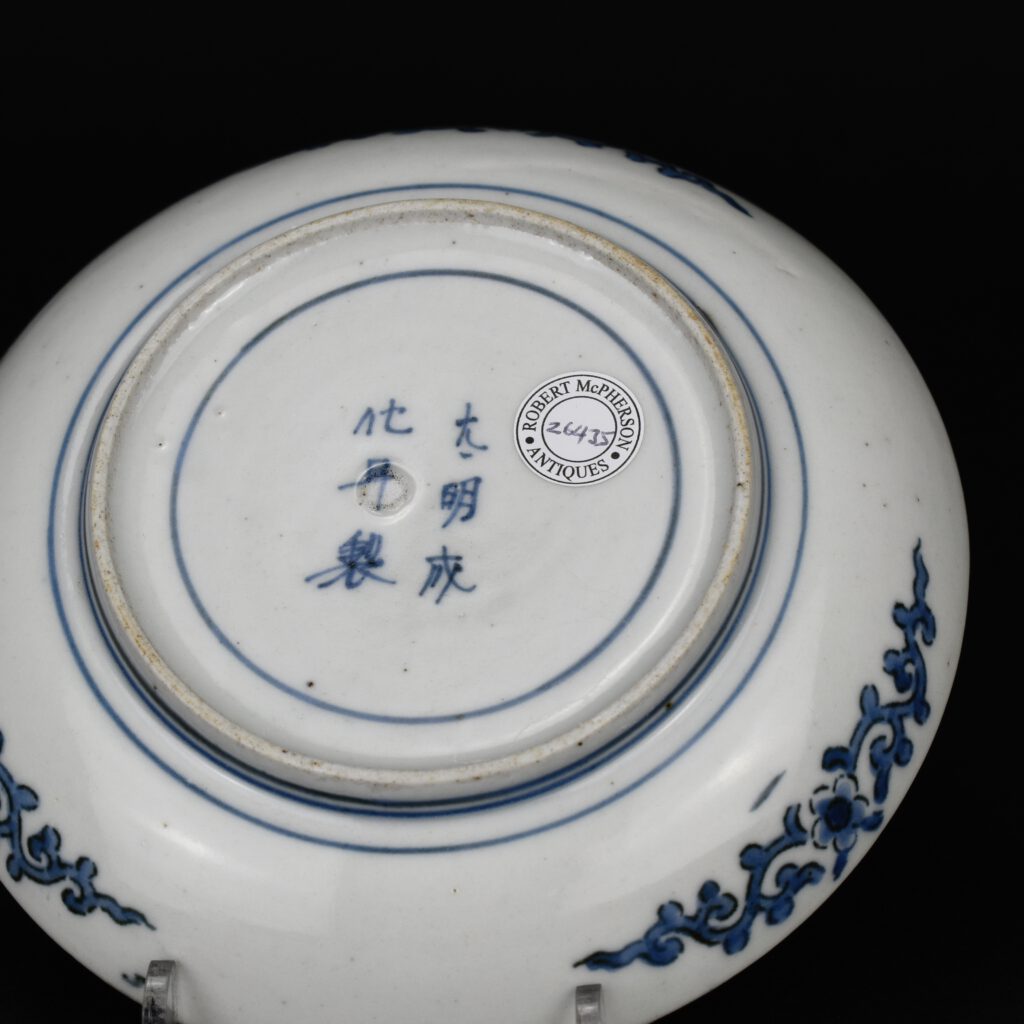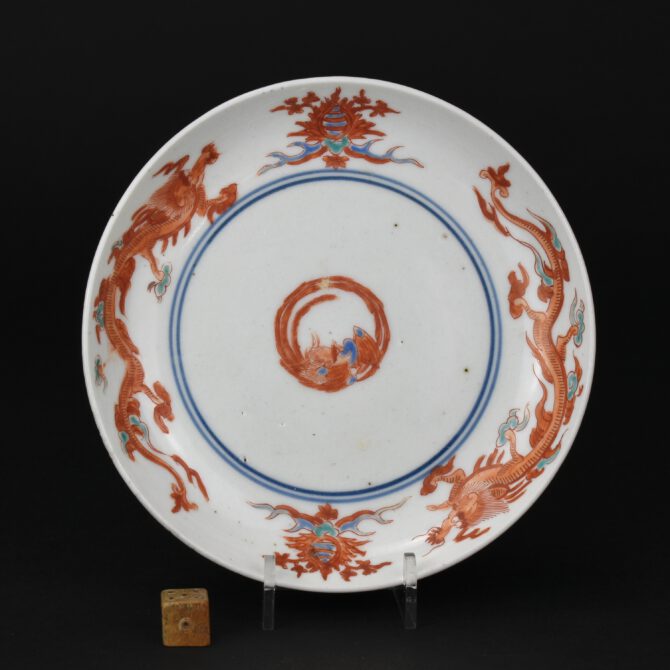
Japanese Kakiemon Red Dragon Dish
A Small Kakiemon ‘Red Dragon’ Dish, Probably Kakiemon Kilns, Genroku Period 1688 – 1704. Decorated with two dragons to the rim divided by mythical turtles and a Ho-Ho bird to the center. Painted in flat iron-red and enhanced with small amounts of turquoise and blue enamel. The back has three Karakusa designs which are stencilled, there is a pseudo-Chenghua six character mark (Ming dynasty Chenghua 1465-1487) to the base. The Red Dragon Pattern was made at Meissen according to Bonham’s (London) it was “possibly as early as Summer 1729, for the Paris merchant, Rudolph Lemaire, who planned to pass off the copies of Asian porcelain that he ordered at Meissen in Paris as the more costly originals. After the Lemaire plot was uncovered and the porcelain that he ordered was confiscated to the Japanese Palace, it seems that porcelain with this decoration was initially allowed to be sold to the public (Weber, p. 248). It is probable that Augustus the Strong only reserved the pattern for the sole use of the Court shortly before his death on 1st February 1733. At the beginning of November 1734 his successor, Augustus III, chose the ‘Red Dragon’ pattern to decorate the first Dresden court service of Meissen porcelain (Weber, p. 249). The first delivery followed in 1735: the first of many throughout the 18th and 19th centuries.” Bonham’s, Fine European Ceramics, 18th of June 2014, lot 54.
SOLD
- Condition
- In excellent condition, a tiny spot of wear over a firing fault to the Ho-Ho bird.
- Size
- Diameter 14cm (5 1/2 inches).
- Provenance
- N/A
- Stock number
- 26435
- References
- A very similar dish is in the Rijksmuseum - Red Dragon Dish c.1670 - 1700. Bequest of B. Westendorp-Osieck Bequest, Amsterdam 1968. This dish is 21cm - See bottom of this page. Bonham's, Fine European Ceramics, 18th of June 2014, lot 54 - see bottom of this page
Information
A Very Similar Kakiemon Dish in the Rijksmuseum.
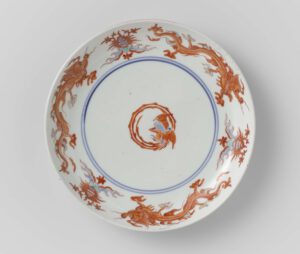
A Meissen Version of the Design c.1730.
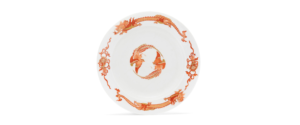
Stencilled Designs on Japanese Porcelain
This technique adapted from textile production was employed contemporaneously at the Nabeshima kiln, and although apparently a mass production technique, it has been suggested that it was actually reserved for use on more expensive porcelains, because of the cost of the actual stencils; the object being to produce patterns of a standard or identical appearance. This class of porcelain was produced at the Kama no Tsuji kiln in the Nangawara valley for a comparatively short period between the years 1690 to 1730 and was made primarily for the domestic market. It has been suggested that the production of this style of porcelain stopped because the skilled workers were subsequently employed at the Nabeshima kiln.
Hō-ō or Ho-Ho Bird
The Japanese Hō-ō bird is type of auspicious phoenix and is similar to the Chinese Fenghuang. the Hō-ō appears only in peaceful and prosperous times (nesting, it is said, in paulownia trees), and hides itself when there is trouble. As the herald of a new age, the Hō-ō descends from heaven to earth to do good deeds, and then it returns to its celestial abode to await a new era. It is both a symbol of peace (when the bird appears) and a symbol of disharmony (when the bird disappears). The Ho-o Bird appears frequently in Japanese porcelain of the late 17th and early 18th centuries, especially in Kakiemon wares. Ho-Ho is often used when referring to English porcelain versions of these Kakiemon designs.
